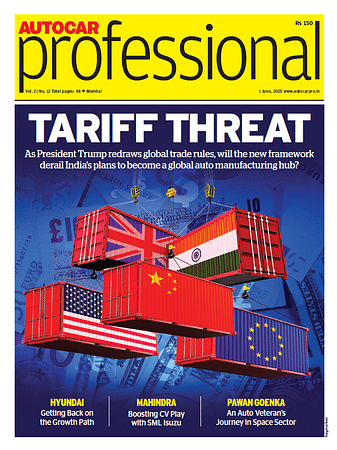The Growth of the Second-hand/Refurbished Bike Market in India
As rising costs and changing mindsets reshape mobility, India’s used two-wheeler market is gaining momentum—driven by affordability, digital innovation, and growing trust in organized platforms bridging gaps in urban and rural transportation needs.
India is a nation that moves on two wheels. Two-wheelers have been the most affordable means of personal transportation for decades, navigating congested roads, reaching the farthest of places, and providing a lifeline to the millions. As urbanisation intensifies and rural connectivity increases, the need for affordable and reliable mobility has never been greater. For most, purchasing a new vehicle is still beyond their reach, spurring a subtle but forceful move to second-hand and refurbished two-wheelers, a segment now at the heart of India's mobility narrative.
India represents almost 40% of the world's two-wheeler sales, highlighting not only the magnitude of domestic demand but also the growing importance of the used bike market. And yet, despite its scale, the sector remains substantially unorganised. It has traditionally been dominated by informal transactions and inconsistent quality standards. Now, a wave of technology-enabled platforms is starting to reshape this space, introducing transparency, efficiency, and trust to what was previously a fragmented and opaque system.
This shift is backed by more than anecdotal evidence. The Indian two-wheeler market is predicted to expand from nearly 21.3 million two-wheelers to approximately 55.8 million units by 2027 due to the increasing urbanization, disposable incomes, and demand for inexpensive mobility. While traditionally fragmented and largely disorganised, the industry is slowly reorganising, with a predicted CAGR of 12.5% from FY 2023 to FY 2028. The informal is being formalised by newcomers intending to develop transparency, structure and standards in the space.
Urban and rural markets both exhibit high adoption, although their patterns are different. Urban markets of Delhi NCR, Mumbai, Pune, and Bangalore have demand from young working professionals, students, and gig economy workers looking for quick, economical travel. Urban areas account for 75% of used two-wheeler sales , reflecting strong interest from tech-savvy consumers. In rural India, used bikes support livelihoods in agriculture, trade, and regions underserved by public transport.
Affordability continues to be the driving force. Most customers like to avoid stretching budgets on a brand-new vehicle and instead seek value in the used segment. Even here, attitudes are changing, buyers now demand reliability and quality, not just a lower price. Financing can aid this further, but penetration is below 10%, particularly in rural markets. This gap leaves room for platforms that can instill confidence and facilitate more financial inclusion.
Trust, once a barrier, is becoming a differentiator. Consumers today expect no surprises, they demand certified inspections, verified background checks, and transparent prices. No compromises on quality is now a given. Refurbished two-wheelers that deliver on performance and promise attract a wider audience. For many, a used bike is no longer a gamble—it’s a smart, dependable choice.
Digital platforms have accelerated this transformation. With the advancement of smartphones and internet penetration, online browsing, comparison, and buying of two-wheelers has become easier. AI-enabled Self-Inspection system now enable sellers to obtain instant, data-driven price estimates by simply uploading photographs and basic details of the vehicle, eliminating uncertainty and shortening delays. As consumers experience, and adopt digital change, their confidence continues to grow.
Who are the new buyers? A lot of them are 20 to 30 years old, looking for value in transportation. The 100-110cc motorcycle segment is hot, in terms of value and simplicity. For young families, college students, and delivery riders, an affordable used bike is usually the first step towards freedom and opportunity. In an economy disrupted by the gig economy and changed by COVID-19, often every ride is a story, and that story increasingly begins with a second-hand bike.
Organized players are raising the standards. Customers today want a guarantee that a vehicle bought will be subjected to rigorous inspection and is certified, with minimal paperwork and guarantee of proper after-sales assistance. With AI self-inspections, digital records, and freight, the journey from search to ownership is more seamless than ever. These organized systems force out the uncertainty that the market had in the past.
But challenges remain. In rural towns and small cities, the unorganized sector still reigns. While a few organised players are beginning to enter these markets and bring some structure, the landscape remains largely fragmented. There, buyers are confronted by inconsistent quality, incomplete documentation, and absence of after-sales services. Regulatory disparities between states hinder ownership transfers. These continue to constrain trust, rendering the experience less predictable. Bridging this gap is the key to industry-wide improvement.
Looking forward, the prospects are upbeat. The used two-wheeler segment is likely to grow further, aided by affordability, digital reach, and change in mindset. Government policies encouraging sustainability and a circular economy will also help the refurbished segment. Recycling vehicles avoids waste and emissions, and hence is both an economic and eco-friendly option.
In this way, the used two-wheeler market in India is now more than just an alternative for people who can't afford to buy new. It's turning into a preference for those who appreciate functionality, quality, and reliability. With platforms setting higher standards and changing attitudes, second-hand is no longer second-best—it's first in value, first in possibilities, and often, the first real step towards a better journey.
Arun Aggarwal is a Business Head at DriveX. Views expressed are the author's personal.
RELATED ARTICLES
Opinion: How will KTM Change After the Bajaj Takeover?
Now that we know KTM has been saved, the question is what its future identity will be.
Why Leasing Dominates India’s Commercial EV Market
Leasing dominates India's commercial EV sector as fleet operators seek to mitigate high upfront costs, battery uncertain...
Top Automotive Aftermarket Trends to Watch in 2025
India’s ₹94,000 crore automotive aftermarket is undergoing a tech-driven transformation, led by digital platforms, safet...





 11 Jun 2025
11 Jun 2025
 950 Views
950 Views





 Autocar India
Autocar India


 Sarthak Mahajan
Sarthak Mahajan


